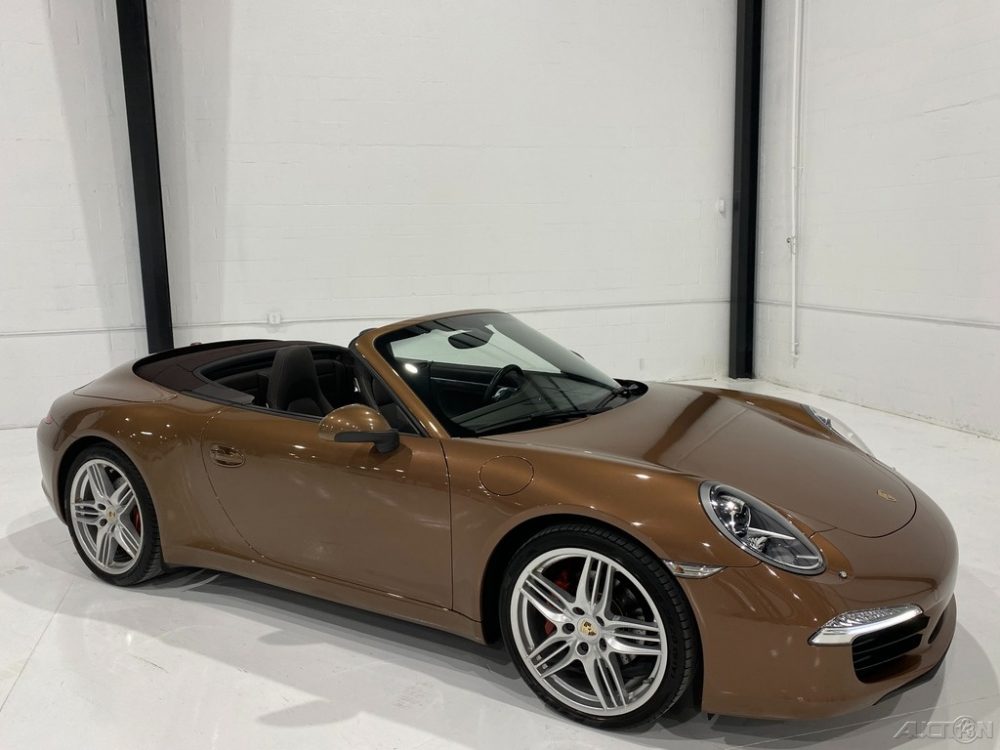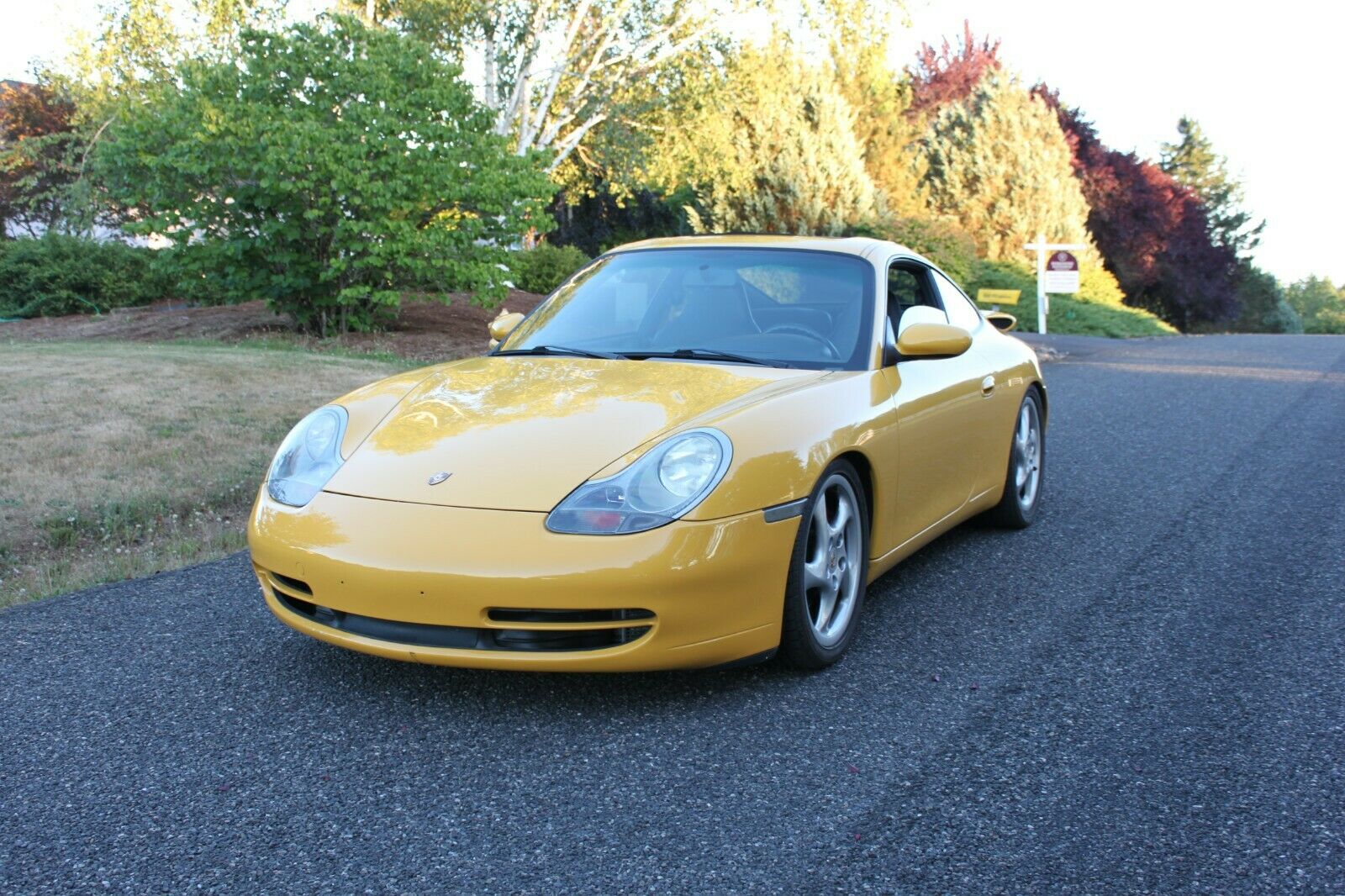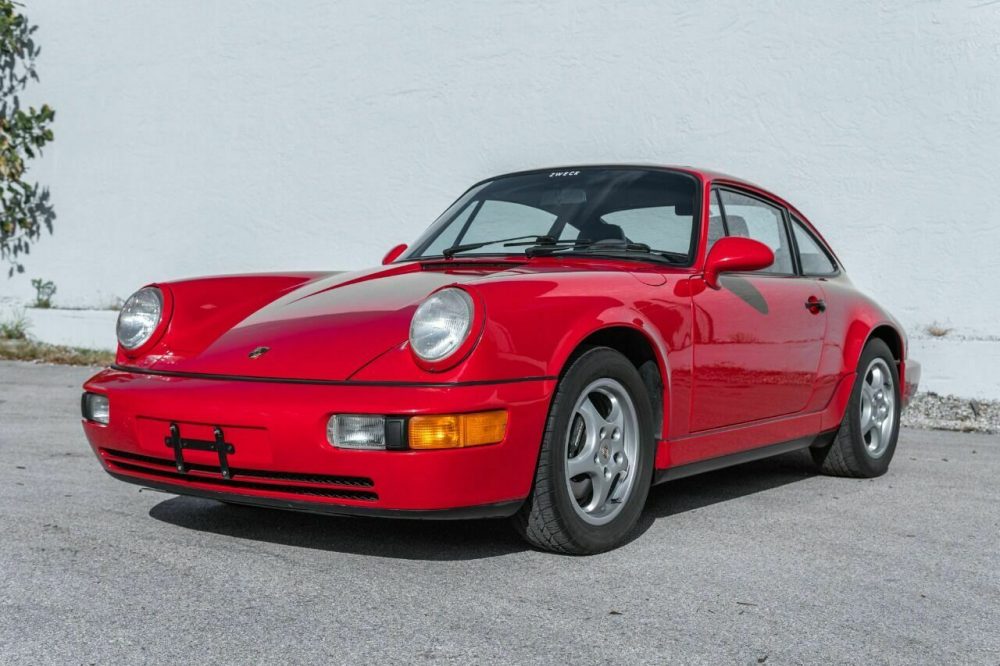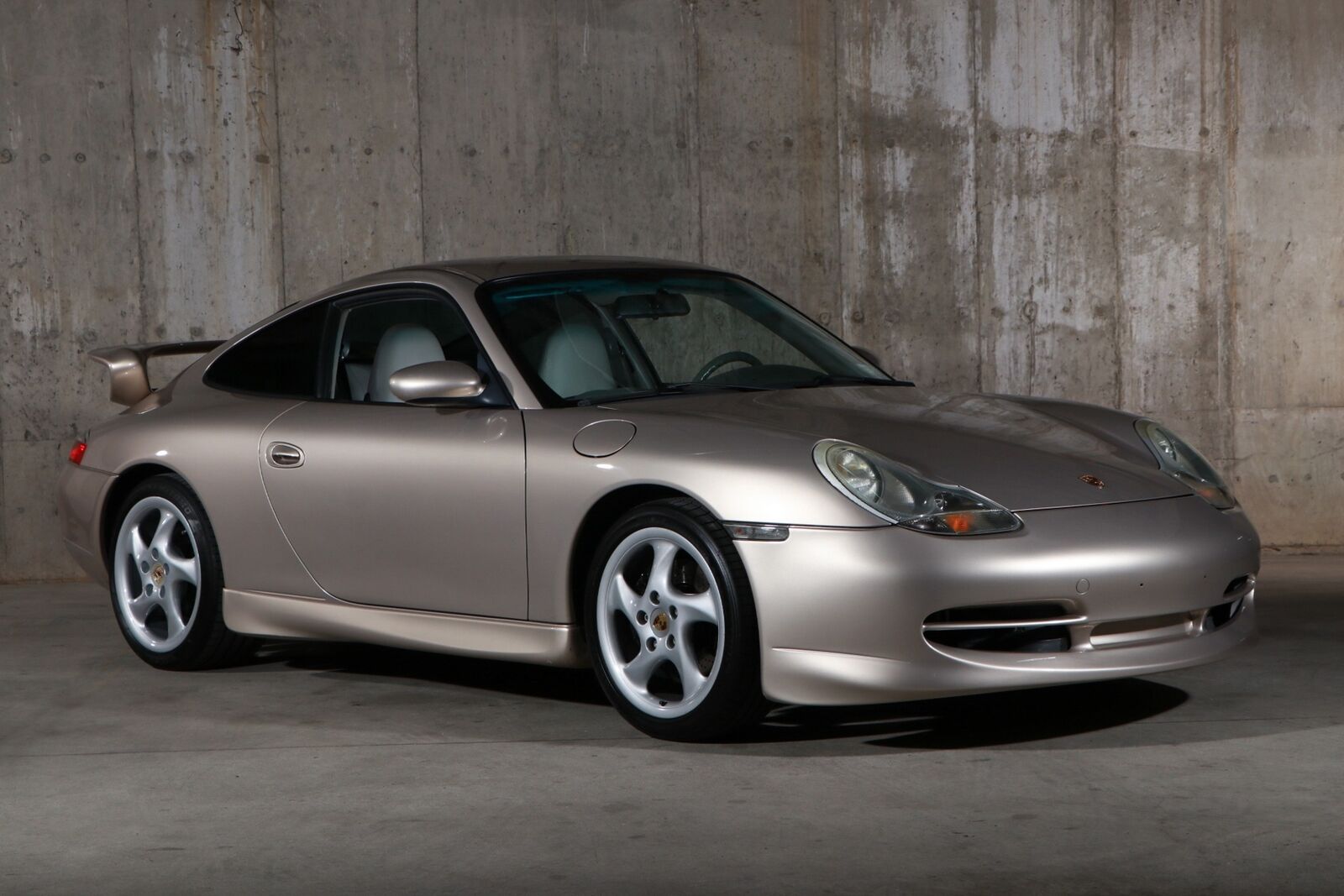I think what I’ve learned over the years is that if a color exists, Porsche isn’t afraid of it. They’ll basically paint your car almost any color for a (large) price, and then even themselves get a little cheeky when it comes to certain shades that you’d never expect. Today’s color, Cognac Metallic, can certainly be called that. The short of it is that it is very brown and not afraid to show it. Of course, it is on a cabriolet body with a dark brown soft top and an Espresso Natural leather interior as well. Who would sign up for this?
Month: September 2021
Back with another 996! This one grabbed my attention for a few reasons – first off, it’s Speed Yellow, which is awesome. Second, it had an unusual wing, and somewhat ironically has the rear Aerokid pieces not seen on the last 996 I looked at:
Mileage is slightly higher than the last one, though it has a few nice options like hardback sport seats with body-color trim. Let’s take a look!
CLICK FOR DETAILS: 2001 Porsche 911 Carrera Coupe on eBay
2 CommentsTo me, the Porsche 964 was that perfect blend between the old school Porsche feel but modern enough amenities where you could drive it everyday and not feel like you were giving up everything. By the time the 964 rolled around in the early 1990s, you had basically all your power accessories, a half-decent air conditioning system, and an airbag steering wheel for when you bounce the car off a tree. On the other end, you still had the classic flat-six that has been around for ages by now, though it was bumped up to 3.6 liters, and the looks are still unmistakable as a Porsche. Because of this, among other reasons, 964s values have shot way up in the past 10 years or so. Long gone is finding a half decent Carrera 2 for $33,000, as those are suddenly $60,000. Rare color and low miles? Tack another $20,000 on to the price. This 1992 up for sale in Miami is no exception.
CLICK FOR DETAILS: 1992 Porsche 911 Carrera 2 Coupe on eBay
4 CommentsBMW took a big leap at the end of the 1980s and introduced some pretty extreme design language. First was the E31 8-series, a seeming quantum leap from the outgoing 6-series. That chassis pioneered, for better or worse, a tremendous amount of technical and electronic innovation for BMW. The 8s relied on a bevy of computers to control its chassis, electronic suite and engine. Side by side with the more famous Grand Tourer though was a diminutive roadster BMW produced based heavily on the E30 chassis. Instead of a heavy reliance on computer technology, the futuristic (hence Z for the German word for future – Zukunft) plastic bodied Z1 looked like a supercar even if it didn’t go like one. Park one next to a E30 convertible and you’d never know the two are related!
The Z1 was a complete departure for BMW; while they were not strangers to small cabriolets, their previous efforts were in the 1930s with the 315/1 and the 1960s with the 700. BMW went away from the idea of an integral body and frame to a separate chassis with removable, plastic body pieces. The idea was that the owners could replace the panels themselves to “repaint” the car with minimal effort. It was something the Smart car would be notable for – a car that launched a decade following the Z1. To get the paint to adhere to the bodywork, BMW had to partner with AZKO coatings to develop a flexible paint which they termed ‘Varioflex’, while the bodywork had to be attached using a unique elastic joint technique. The doors didn’t open out – they slid down into the supporting chassis structure. The underbody was flat, not only for aerodynamics, but the tray turned into a diffuser towards the back, assisting in sticking the rear to the ground as speeds rose. In front was nothing new: the venerable M20 from the E30 popped up here, too – but in the rear the Z1 was new with a multi-link rear axle of its own. This new design would later be incorporated into the E36. It’s interesting that with the Z3 BMW opted to go the opposite route and incorporate earlier E30 pieces into the rear of the /7 and /8. While performance was relatively leisurely, the Z1 nevertheless garnered praise for its innovation, unique design and great looks. They never made it to U.S. shores and only around 8,000 examples were ever produced, but a few have crossed the Atlantic now that they’re old enough to be more easily imported:









